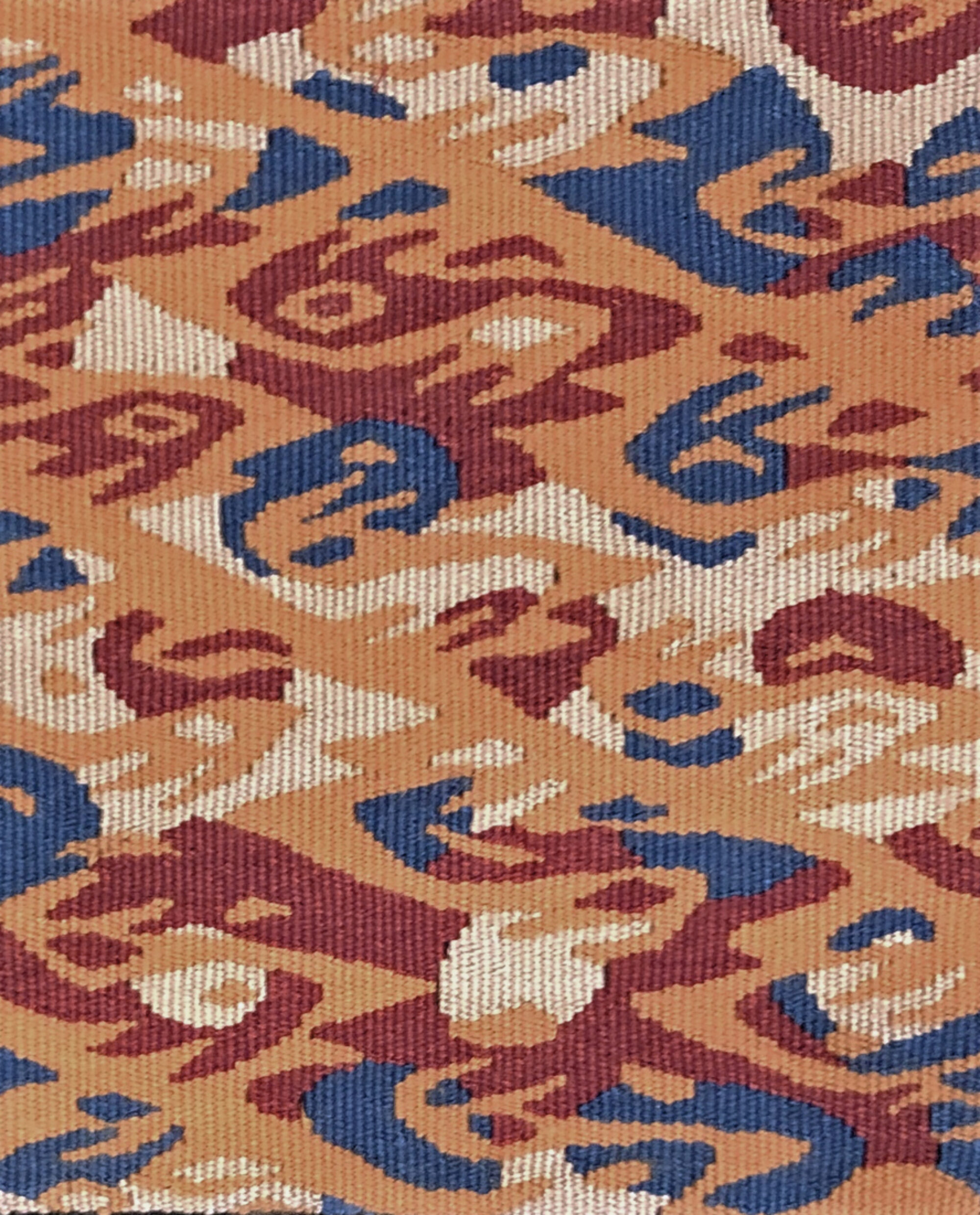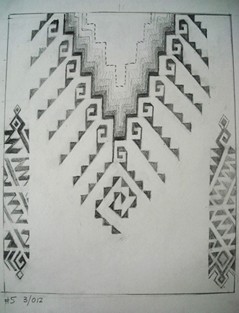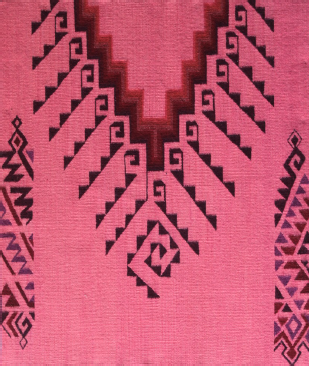This article was first published in the American Tapestry Alliance’s newsletter, Tapestry Topics, Vol. 30, No. 3, Fall 2013.
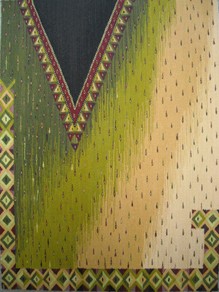
While attending the ATA events at Convergence, Long Beach in the summer of 2014, Susan Martin Maffei and I were lucky to be able to visit the exhibition, Meeting Cultures: Collaborations of Yael Lurie with Luis Lazo, at the Larochette Textile Conservation Studio. Yael has long been recognized for her collaboration with Jean Pierre Larochette, but this show featured the tapestries of a new partnership with Luis Lazo, a weaver from Teotitlan del Valle, Oaxaca, Mexico. Susan and I were very excited about the work and curious about the working relationship between Yael and Luis. This article developed out of a series of questions that we posed to the two.
Yael met Luis in 2011 when she and Jean Pierre were visiting Teotitlan del Valle. Luis grew up in a home full of weavers, as most families in Teotitlan are. Luis, like the other children in the village, was given yarn so that he could “play” on the legs of a chair turned upside down. The four legs of the chair became the frame for the warp. Luis graduated to a horizontal, treadle loom at the age of 9 and, as an adult, has worked in several established workshops.
More recently, Luis had become interested in exploring ways of weaving outside his Saltillo tradition and so his meeting with Yael was serendipitous. Yael encouraged him to think about geometry and symmetry in new ways. Yael: “What characterizes the Saltillo designs is geometry within symmetry. I… pointed out that using similar geometric elements while diverting from symmetry could create something new and exciting.” She spoke of “asymmetrical balance.”
Yael: ” I illustrated with a quick sketch what I meant by diverting from symmetry while still using geometry. To clarify I pointed out the huipil designs, in which you see either the front or the back, but it is nevertheless always harmonious. I left the sketch with the understanding that he could use it.”
Jean Pierre offered Luis technical advice, including the suggestion that weaving from side to side, instead of from bottom to top, might produce some insights that would offer new directions. Luis did go on to weave a tapestry from Yael’s sketch and submitted it to the show, Esplendor del Textil, curated by Jean Pierre Larochette for the Museo de Arte Peter Gray in Puerto Vallarta. Yael was surprised and excited by Luis’ adaptation of her sketch and since then, the collaboration has continued and grown.
(right) Luis Lazo and Yael Lurie, “Referente Huipil # 5,” 17 in x 14 in, 2012, photo: Jean Pierre Larochette.
Yael continues to produce only a black and white sketch as the starting point. “We work at a distance with very little communication. Once the design and format are decided, he is on his own. Working with Luis allows a certain ease and freedom that is new to me. Not having control of the results brings freshness to the process.” When asked whether she was ever surprised by the way Luis had handled the work, Yael responded, “Not only surprised, I have been in awe. I have faith and appreciation in Luis’ creativity.”
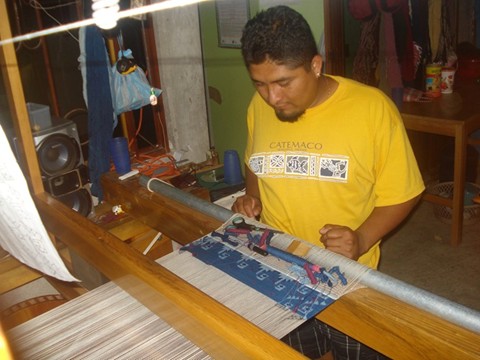
Luis dyes his yarn with natural dyes: indigo, cochinille, pericon and bejuco. He organizes them in a color chain (on the suggestion of Jean Pierre) and may dye additional colors as he weaves. The tapestries are 20 ends to the inch and finer. He combines his culture’s shape based approach with techniques such as the hatching that Jean Pierre uses in his work with Yael. The collaboration with Yael has offered him the opportunity to think of his weaving in new ways and he intends to continue exploring the huipil as a design source. As for his exploration into asymmetry, Luis says, ” I feel free! I feel released from rigid boundaries.”
Luis is one of a number of weavers who are introducing innovations to the weaving culture of Teotitlan del Valle.
Luis: “Among the weavers participating in Interweaving Cultures there is a desire to explore our individual creativity, in our own personal ways. There is also a growing consensus for helping other weavers as well, making sure that there is a genuine interest.”
“This new collaboration is a turning point in my professional life. It has enriched me in many ways. I am working now on designs that offer me new challenges. I am looking at my work differently. I can imagine many possibilities but I am taking one day at a time.”
Yael: “Coming to Mexico when I was 23 years old was a fulfillment of a childhood dream. Once in Mexico I knew why. It is a country where art and life are one. It has profoundly affected my life. I have learned the language and I was formed as an artist in Mexico. Luis is Zapotec and I am Jewish. Art creates bridges between different cultures. I feel there is mutual respect and appreciation. It is wonderful to work with such a talented young person. We do not only share our love for tapestry but also share the importance of our path crossing and our working together.”
